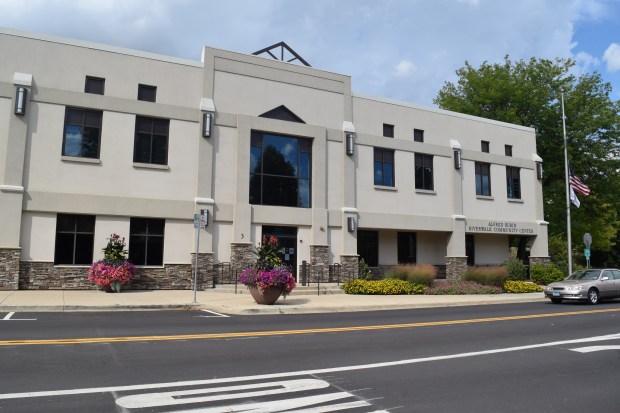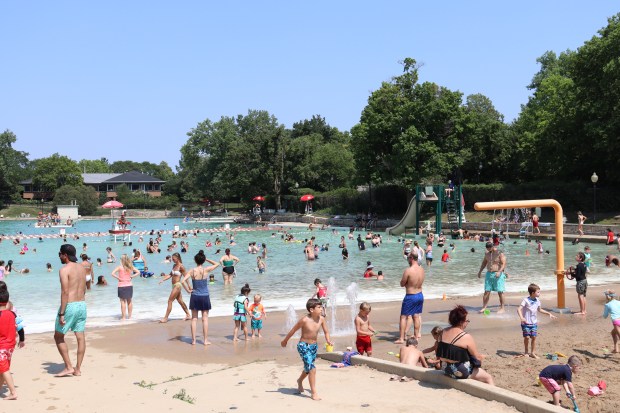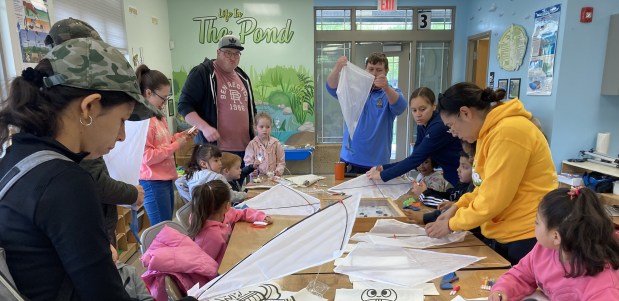Naperville residents want more indoor recreation facilities, especially those that support aquatics, according to a report released by the Naperville Park District.
Months in the making, the assessment was devised to help the district chart a path forward for the future of its recreation space.
Now completed, takeaways from the initiative — which span the demand for more indoor aquatic facilities to needing more enhanced programs for seniors — will guide the district as it manages indoor recreation space in years to come, district staff say.
“I’m really excited about the path forward,” Naperville Park Board President Mary Gibson said. “…I think this is a reason a lot of us are here on the board — to hear the community, listen and respect their wishes and make the best amenities possible.”
The district conducted the assessment, which took place through much of this year, in tandem with Itasca-based firm Williams Architects, Indiana-based PROS Consulting and the University of Illinois Urbana-Champaign’s Office of Recreation and Park Resources.
Project partners gauged needs and gathered feedback through several different channels. Outreach included interviews with stakeholders, focus groups, open house events and surveys. Efforts culminated in a 266-page assessment report, which can be viewed in full at https://bit.ly/4g5wB1K.
Results were not surprising but rather affirming, particularly with regards to community interest in aquatics, district Executive Director Brad Wilson said.
“Aquatics in the community is something we have heard over the years. … So I think as we worked through this project and received that feedback, really there was that confirmation that there is still that interest,” he said.
Across feedback, the desire for more indoor aquatic facilities was apparent in the statistically valid survey offered to a random selection of Naperville households, which yielded 290 responses, as well as an open survey posted to the district’s website that accrued 1,540 responses.
When asked about their indoor facility interests, residents in the statistically valid survey indicated a preference towards seeing the district build out aquatic facilities.
The public sample showed an even stronger desire for aquatic facilities, with almost 80% of respondents indicating a strong need for a pool for swim lessons or open swim, a lap pool, a water park and a warm water therapy pool.
Interest in aquatics was also evident in what kinds of recreation projects residents would support backing with their own tax dollars, an important question given that building any new indoor recreation infrastructure would likely require financial support from the community.
With available funding, the district can maintain existing facilities and programming but it cannot afford to finance new indoor recreation space, according to Wilson. To that end, as part of its needs assessment, the district surveyed residents’ willingness to pay for a potential future new multi-purpose activity center.
Residents were surveyed on three different bond issue scenarios. They were asked about their willingness to support a bond issue that would fund either: an activity center similar to Fort Hill with the addition of an indoor pool, a center like Fort Hill with no pool or a similar center plus synthetic turf. Estimated costs for the sample bonds ranged from an added $60 to $85 per year annually for 20 years for a taxpayer with a home valued at $440,000.
In both statistical and public survey results, respondents indicated the highest willingness to pay for a center with a pool.
Surveys also assessed where residents would want new indoor recreation space to be built. South Naperville drew the largest swath of support.
Other lessons learned as far as new facilities are concerned include a need to consider Naperville’s aging and increasingly diverse population.
In analyzing current and future demographic trends, the needs assessment found that Naperville’s 55-plus population is expected to grow over the next 15 years. It also found that the city’s residents will become more diverse. In turn, the district should prioritize programming for older adults and evolve alongside the city’s changing population, the assessment recommended.
Apart from new facilities, the assessment also looked at the condition of current recreational space. Patterns observed at Fort Hill and the district’s Alfred Rubin Riverwalk Community Center at 305 Jackson Ave. were among highlights.
The assessment found that Fort Hill, across all activity areas, operates at a high usage year-round. With that in mind, the center cannot meet growing demand for more indoor recreation space in the district, as it is constrained by limited space, the assessment found.

Meanwhile, the Alfred Rubin center operates at about 40% use on average throughout the week. That’s primarily due to senior and active adult programming offered in the center being significantly below optimal use, findings show.
Now equipped with a better understanding of where both satisfaction and needs stand, the district has a general idea where it wants to go next with the assessment results, Wilson said.
Near-term, the assessment made it clear that existing facility use could be more efficient. District staff want to start implementing some of those efficiencies next year, Wilson said. For example, evaluating potential changes to the Alfred Rubin center to increase use.
As for new recreation space, the assessment was just the beginning of a longer conversation, Wilson said. More community engagement is needed before the district can make any firm decisions, but the assessment is a good starting point, he said.
“There are some discussions that we need to have with community partners and some additional research that we need to do, and then we’ll be able to make some additional decisions in the future,” Wilson said.
Further discussion will, in part, inform if and how the district goes about pursuing a bond referendum to support new amenities. Wilson, however, emphasized that it’s too soon to say how likely voters are to see a referendum from the district in coming years.
Engagement will continue through 2025, Wilson said.




